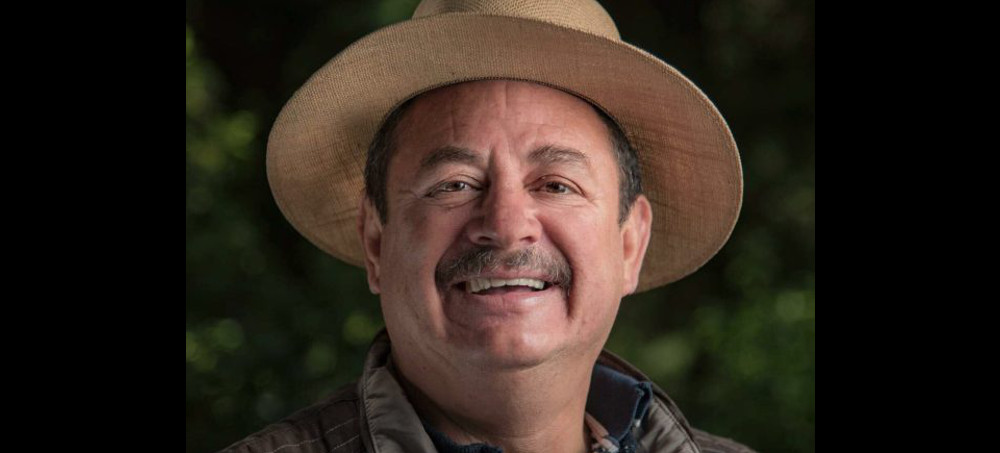
27 December 21
A Wonderful $3,000 Donation! Who Can Match That?
Finally a chance to make up ground. Most of our readers cannot donate that much money, but a few can. Who can match this wonderful gift?
Is there someone?
Marc Ash
Founder, Reader Supported News
Sure, I'll make a donation!
If you would prefer to send a check:
Reader Supported News
PO Box 2043 / Citrus Heights, CA 95611
Follow us on facebook and twitter!
Update My Monthly Donation

27 December 21
With 5 Days to Go in 2021, We’re In a Bit of Trouble
Normally our best chance to replenish depleted financial resources this year-end fundraiser is an uphill battle with little progress.
Great people are helping and we deeply appreciate their efforts but we need to get going, we need a bigger push.
Still only a small fraction of our readers have make a contribution.
We need you now.
Marc Ash
Founder, Reader Supported News
Sure, I'll make a donation!
If you would prefer to send a check:
Reader Supported News
PO Box 2043 / Citrus Heights, CA 95611
Follow us on facebook and twitter!
Update My Monthly Donation

27 December 21
Live on the homepage now!
Reader Supported News
WITH 5 DAYS TO GO IN 2021, WE’RE IN A BIT OF TROUBLE — Normally our best chance to replenish depleted financial resources this year-end fundraiser is an uphill battle with little progress. Great people are helping and we deeply appreciate their efforts but we need to get going, we need a bigger push. Still only a small fraction of our readers have made a contribution. We need you now.
Marc Ash • Founder, Reader Supported News
Sure, I'll make a donation!
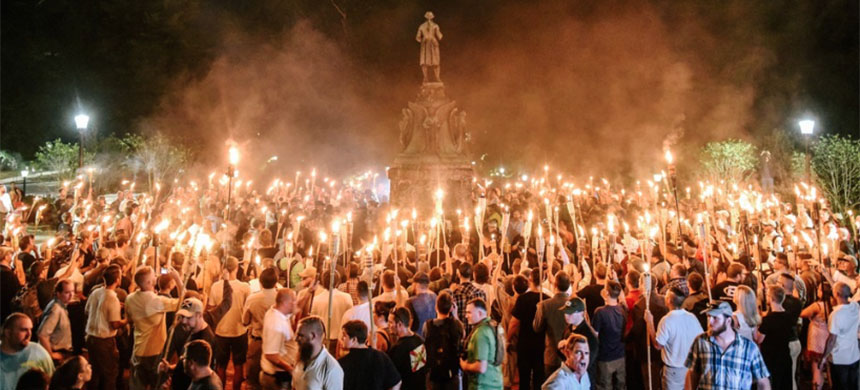
James Loeffler | Charlottesville Was Only a Preview
James Loeffler, The Atlantic
Loeffler writes: "We have never had the national reckoning that we need over the events of August 2017."
We have never had the national reckoning that we need over the events of August 2017.
The roar was the first thing to reach Natalie Romero. “I just heard loudness, like thunder, as if the earth was growling,” the University of Virginia student later testified. Hundreds of white supremacists were marching toward her, their low dog barks alternating with rhythmic war chants: “Jews will not replace us.” “Blood and soil.” “White lives matter.” As she clutched a homemade protest banner, huddling with a small group of students around the base of a Thomas Jefferson statue, Romero feared for her life. A lit torch landed at her feet. A burst of mace hit her. “I felt like a mouse, trapped,” she said. “I felt like I’m about to be burned at the stake.”
The racist rage that enveloped Romero and other student counterprotesters on the night of August 11, 2017, erupted again the next morning in downtown Charlottesville, Virginia. As white-supremacist groups convened for the “Unite the Right” rally in defense of the city’s Robert E. Lee statue, they marched defiantly into a diverse, boisterous crowd of counterprotesters composed of local clergy, students, activists, and townspeople. They used their flagpoles and riot shields to attack anyone they perceived to be a Jew or a Communist, or to be affiliated with antifa or Black Lives Matter. The rally was swiftly shut down by authorities, and the crowds began to disperse. Two blocks from the park, James Fields Jr., an alt-right foot soldier from Ohio, raced his Dodge Charger down a narrow street and directly into a crowd of people, including Romero, leaving Heather Heyer, a 32-year-old paralegal, dead and several others severely injured.
Charlottesville that August offered a preview of the America that we would become: a country in which violently racist sloganeering freely mixes with absurd, carnival antics; a culture in which constitutional principles are treated as cudgels with which to crush political opponents; a society in which gun-toting extremists parade openly in the streets in search of enemies to strike, and then claim self-defense if anyone is injured; and an online ecosphere in which virtual hate escalates before spilling over into real-world terror. None of these nightmarish trends began that weekend, but Charlottesville propelled them into the heart of American public life. And then Donald Trump’s invocation of the “very fine people on both sides” ripped away one of the last remaining rhetorical guardrails separating Christian racial populism from liberal democracy.
Charlottesville’s greatest legacy, however, is its fracturing of a common set of truths. Our national conversation about race and religion has since devolved into a contest of warring slogans and dueling dates. Words fail us; we cannot even agree on the definitions of racism and anti-Semitism.
We have never had the national reckoning that we need over the events of August 2017. The closest we have come is the civil trial against the white-supremacist organizers, which concluded just before Thanksgiving. I spent a month inside the federal courthouse where that trial took place, just a mile down the road from the university where I teach Jewish history. What I heard and saw proved even more disturbing than I had anticipated. For it was not only white supremacy on trial in Charlottesville, but also the law itself, and its capacity to quarantine a virulent ideology from overwhelming our enfeebled, all-too-distracted democracy.
After four years of planning, four weeks of trial, 36 witnesses, and five terabytes of digital evidence, a Charlottesville jury found the defendants liable under Virginia law for an unlawful civil conspiracy to commit racially motivated violence. It awarded damages to the tune of some $26 million. The architects of the trial established an unassailable historical record of the moral trespass that occurred. Yet significant as they are, the verdicts represent only partial victory. The jury deadlocked on two federal conspiracy claims. The sum of the damages it did award will likely drop for technical reasons, and the money may not even be collectible from the defendants.
Of greater concern, however, is the deafening public silence surrounding the trial. Four years ago, Americans were transfixed by Charlottesville. This time around, they all but ignored it. Attention from national media outlets was surprisingly scant or, in the case of conservative outlets, practically nonexistent. Even the city of Charlottesville itself seemed to pretend that the trial was not taking place. The fall college-football games attracted thousands of visitors each week. Meanwhile, the courthouse plaza remained almost completely empty of onlookers and protesters most days of the trial. A legal reckoning works only if society pays attention.
The U.S. Federal Courthouse for the Western District of Virginia is a squat, three-story red-brick building at the far west end of downtown Charlottesville’s pedestrian mall. The courthouse sits on land that once contained Vinegar Hill, a historically Black neighborhood razed in 1964. It is steps from Emancipation Park (still known as Lee Park in 2017, while the statue stood) and Congregation Beth Israel, the town’s historic synagogue. It is also less than a five-minute walk from Fourth Street, where shortly after noon on August 12, 2017, James Fields Jr. drove into the crowd of protesters.
Fields acted alone, but he was hardly a lone wolf. He left his native Ohio for Charlottesville to answer a specific call from the organized white-supremacist movement that had convened the event they officially named “Unite the Right” and privately referred to as the “Battle of Charlottesville.” The organizers had planned the event on a Discord server, where they discussed dress code, equipment, tactics, and theoretical questions such as the legality of driving through protesters on roadways. Yet the main men of the American far right—the alt-right ideologist Richard Spencer, the shock jock Christopher Cantwell, the neo-Nazi Matthew Heimbach, and a passel of other leading neo-Confederates and white nationalists—fled Charlottesville after the rally and have never faced criminal prosecution for their role in organizing the event. (In 2018, Cantwell pleaded guilty to two counts of assault and battery for pepper-spraying counterprotesters.) The Trump Justice Department evinced no interest in federal hate-crimes prosecution.
What finally brought these men back to town and into a courtroom was a lawsuit filed by nine of their victims. The victims were represented by Roberta Kaplan, who argued the landmark 2013 Supreme Court marriage-equality case United States v. Windsor, and Karen Dunn, a former federal prosecutor, who together assembled a pro bono team of expert lawyers backed by a new legal nonprofit, Integrity First for America. The plaintiffs sued the “Unite the Right” organizers and their groups, 24 individuals and corporate entities all told, for monetary damages. Seven of the defendants simply refused to cooperate at all with the legal proceedings, leading to default judgments against them. That left 17 to face trial. They were represented by five different lawyers, except for Cantwell and Spencer, who acted pro se, or in their own defense.
On the opening day of the trial, Judge Norman Moon, an 85-year-old native Virginian appointed to the federal bench by Bill Clinton, laid out the question at the heart of the case: Did the defendants conspire to commit racially motivated violence at the “Unite the Right” rally? Under that heading, he explained to the jurors, the lawsuit grouped a variety of violations of Virginia’s civil-conspiracy and hate-crimes statutes, including assault, battery, intimidation, harassment, and other forms of violence “motivated by racial, religious, or ethnic animosity.” Two more claims were directed specifically at Fields for intentional infliction of emotional distress and assault and battery.
The legal threshold for establishing a civil conspiracy is quite low. The law requires evidence of only a single unlawful act, even if other behaviors and objectives were completely legal (such as a permitted public protest). Individual actions before, during, or after the events in question can be used to adduce intentions. Added to that, the standard of proof in a civil case is not the more familiar criminal-trial phrase “beyond a reasonable doubt” but rather a “preponderance of evidence,” defined as 51 percent favoring the plaintiff’s outcome.
However, torts constitute a double-edged sword. Tort claims allow victims to seek recompense for their personal injuries and mental harms. The costs of litigation and potential punitive damages can bankrupt extremist groups. Monetizing liability sends a huge signal, a proxy for guilt. But a civil suit reframes bodily violence as a property dispute between two equal parties. An uncollectible debt can further deflate the value of punishment. Either way, in the end, no one goes to prison.
To compensate for those potential limitations, the plaintiffs tried an ambitious legal gambit. They drew on the 1871 KKK Act—federal legislation passed after the Civil War to stop white-supremacist terror from disenfranchising newly emancipated Black Americans and derailing the democratic electoral process—adding to the lawsuit two federal claims of unlawful “conspiracy to commit racially-motivated violence” and “failure to stop [said] conspiracy” against “Black or Jewish individuals” and their supporters. A federal civil-conspiracy charge elevated the case to federal court. The move also increased the potential for public awareness and media interest.
Equally important, the federal claims made explicit the symbolic links between our own time and the historical moment when white supremacists embraced racial violence to terrorize Black freedmen and repel immigrants whom they believed to be racially inferior, including Jews from Eastern Europe. The 1870s also saw southern American cities and towns beginning to erect monuments honoring Confederate heroes and perpetuating the false narrative of the Lost Cause. One such statue, of Robert E. Lee, was commissioned in Charlottesville in 1917 and erected in 1924. In April 2017, after years of debate and a lawsuit, the Charlottesville City Council voted to remove the Lee statue, providing the pretext for the “Unite the Right” march four months later.
“We’re raising an army, my liege,” Jason Kessler texted Richard Spencer in early June 2017, adding, “For free speech, and the cracking of skulls if it comes to it.” A few weeks before, Kessler, a recent UVA grad and far-right provocateur, had begun reaching out to noted white-supremacist leaders across the country to get them to rally around the Lee statue. He proposed to “unite the right,” capitalizing on the new momentum the far right felt in the early months of the Trump administration.
The next steps are documented in a stunning archive of digital evidence compiled by the plaintiffs’ legal team—texts, Discord messages, Facebook exchanges, and emails—that reveals how Kessler, Spencer, and others conspired to bait their enemies into a physical confrontation similar to the one that had taken place in the spring at the “Battle of Berkeley,” where the Identity Evropa leader Nathan Damigo punched a female counterprotester in the face. The spectacle of street violence, with the enemy drawn out and then smashed in a triumphant display of white power, was a core goal of the Charlottesville gathering. The months of planning included discussions of such violence, communications strategies, plans for enticing antifa to appear, and endless racist and anti-Semitic rants and memes.
The online talk also included crude juvenile boasts, edgy jokes, and bizarre fantasy scenarios. At the trial, the defendants insisted that this online invective bore no relationship to real-world violence. They had never conspired to do more than show up and speak at a rally. They had aimed to provoke outrage, not violence. It was their political enemies who had responded ferociously; they acted only in self-defense. Their humor was taken out of context, its import exaggerated. Holocaust jokes about gassing “kikes” were a far cry from pepper-spraying counterprotesters. Online fantasies of racial warfare hardly equaled street scrums and body blows with riot shields.
Beyond simply proving the existence of an unlawful conspiracy, the plaintiffs’ lawyers worked hard to overcome the defendants’ argument and expose their fundamental duplicity and deceit. To do so, the lawyers returned time and again to gaps between the defendants’ pretrial depositions and cross-examination testimony on the stand, snatches of online dialogue that suggested awareness of real-world plans, and the underlying ideology of genocidal extermination. The result was a damning portrait of the ugly innards of the American far right.
There were moments when the lawyers caught the defendants in obvious lies. When Spencer spoke of his lofty views on global politics and claimed that his philosophical sincerity proscribed political violence and verbal disparagement of his opponents, they countered with footage of him on the night of August 13 in which he is heard wildly screaming about his anger at “fucking kikes” and “fucking octoroons,” the latter once enslaved by his ancestors, and his desire to return to Charlottesville for more confrontation. “This, ladies and gentlemen,” Dunn remarked, “is the real Richard Spencer.” Most of the time, however, the defendants simply weaved and dodged in response to cross-examination, admitting their prejudices while disclaiming the seriousness of their online rhetoric.
There is something both noble and tragic about these efforts to reveal the true face of white supremacy. Noble because calmly discussing racism and anti-Semitism with racists and anti-Semites is hard, painful work, even in the placid confines of a courtroom. Tragic because doing so reflects the great liberal faith in the power of honesty. If you just expose the lies and hatred, then eventually the liars and haters will come clean about their intentions. Yet the law is supremely challenged by a postmodern racist ideology that deliberately blurs the line between fact and fiction.
In that regard, arguably the trial’s most important line arrived on the 17th day, during the witness testimony by Samantha Froelich, the former girlfriend of the defendant Eli Kline. When she was initiated into the movement, she recalled being told: “Welcome to the alt-right, where the Holocaust never happened and we want it to happen again.” That quote perfectly captures the strangeness of the danger that appeared in Charlottesville four years ago, and the difficulty in reckoning with it in a court of law. The architects of Charlottesville openly espoused genocidal fantasies, yet they also gleefully dissolved the line between role-playing and incitement. Part of this reflects a strategy of desensitization and deception. As the style guide of The Daily Stormer, a white-supremacist website for which many of the defendants wrote, counsels its writers, they should express themselves so that people “can’t know whether we’re joking or not.” Sometimes even the members of the alt-right who are speaking don’t know either. That, too, is the point. Contemporary white supremacists have turned paradox into operating principle, creating a world in which everything can be plausibly denied because nothing is genuine—until suddenly it becomes all too real.
What kind of reckoning, then, did the Charlottesville trial provide? As the verdicts rolled in, audible gasps greeted the announcement of the large damages awarded. Yet observers immediately spotted the wrinkles. The jury awarded $1 each to seven plaintiffs on the charge of violating Virginia conspiracy law, and $0 to two plaintiffs in terms of compensatory damages—for actual harms suffered—but then several million more for punitive damages, intended to punish outrageous conduct and deter other offenders. Yet because of a 2003 Supreme Court ruling that requires a narrow ratio between punitive and compensatory damages, the discrepancy may very well lead to a drastic reduction in the awards.
More puzzling was the jury’s decision to find for the plaintiffs on the state claims but deadlock on the two similar federal civil-conspiracy claims. Why did the jury find liability for racially motivated violence under state law but not federal law? Perhaps it found the statutes confusing, or insisted on a higher level of proof for the federal claims. Perhaps it reached a point of mental exhaustion or internal division, and compromised on a mixed verdict. Perhaps it wished to send some message; perhaps not.
Whatever the jury’s reasons, its decision highlights the sense of a necessary but incomplete victory. The trial is not over. It’s not over because the plaintiffs must still collect the money and may never do so. It’s not over because they have the option to refile the federal civil claims and may yet do so. It’s not over because the transcript and the exhibits remain under court seal, yet to be released as promised. Most of all, it is not over because America has not yet embraced the significance of Charlottesville, for what it represents and what we have become.
At the end of many trial days, those exiting the courthouse were confronted by a single person standing alone, clutching a small protest sign, in the November darkness. It was Rabbi Tom Gutherz of the local synagogue. His lonely vigil was a poignant reminder of how shockingly little attention the town was paying to the trial. Each day, Richard Spencer strolled up and down the downtown mall, retracing his fateful steps during the court’s lunch hour, as life went on around him. Tourists and office workers paid him no heed. If even a single one of the 22,000 students at UVA bothered to visit the courthouse plaza, I did not see them.
Charlottesville was evidently preoccupied with other dramas, such as the turmoil in local government involving the acrimonious departures of the mayor, the police chief, and the city manager. Perhaps apathy and exhaustion kept local activists at home. The fact that Judge Moon had closed the courtroom because of the pandemic surely also had an effect, especially in terms of media coverage.
Or perhaps, just like the rest of America, the people of Charlottesville were more transfixed by the other race-related-murder trials happening in Wisconsin and Georgia. The murderer in Charlottesville, after all, is already serving 30 life sentences for his crime. So much has happened since August 2017: police shootings, street protests and riots, political insurrection. Or maybe what riveted and horrified a nation in 2017 no longer seems all that remarkable. One of the attorneys defending the white supremacists told reporters that he deliberately repeated the word kike in his questioning in order to drain it of any shock value for the jurors. Perhaps the events of Charlottesville themselves have been normalized in the intervening years.
Yet that is precisely why Charlottesville matters. Four years on, the white-supremacist ideologues may have suffered a variety of personal setbacks, organizational failures, and legal struggles. But their ideas have successfully migrated into the mainstream in many obvious ways: the open talk of racial demography and threats to white existence in the conservative media. The moral panic about esoteric legal theories as evidence of a full-blown reverse racism sweeping the land. The frightening demand for a single American religion, Christianity, to replace the creeping atheism blamed on Jews and Communists. The winking calls for violence against political opponents, all too often racial or religious minorities, coupled with the “just joking” defense. The willful desensitization to the malice of hate speech. The skyrocketing FBI statistics about white-supremacist threats and actual episodes of violence. Above all, the unmistakable outlines of January 6, 2021, in the debris of August 11 and 12, 2017.
During the trial, Natalie Romero and the eight other plaintiffs each took the stand to testify about their injuries and experiences. More than one was asked about their motivations for joining the lawsuit. When April Muñiz, a 48-year-old Mexican American Charlottesville resident, began to explain her desire for justice and accountability, Moon quickly cut her off: “It’s not proper to come in and say you have some greater plan than the lawsuit itself.” As a point of law, he was correct. But his remark also reminds us that a trial can provide only a portion of the moral accountability involved in a reckoning. The rest must come from outside, in the work of listening, recording, and remembering.
Justice depends as much on a common public narrative as it does on the pursuit of truth and the authority of the law. We focus so much these days on the distant historical past, on debates about the American founding as an explanation for our present ills. Or we peer anxiously ahead to the elections soon to come. Yet until we can agree on a common understanding of our recent past, we have little hope of repairing our troubled present.
In his final jury instructions, Moon reiterated a theme he had offered at the outset of the trial: “Remember, at all times you are not partisans. You are judges—judges of the facts. Your sole interest is to seek the truth from the evidence of the case.” No words better convey the American faith in the law, and the crucial element of public trust. Law can fix truth, but it cannot do so by itself. The courts will not save us from ourselves, because ultimately, we are the guardians of our own justice. In this perilous moment, we must have the courage to judge ourselves honestly, and completely.
READ MORE
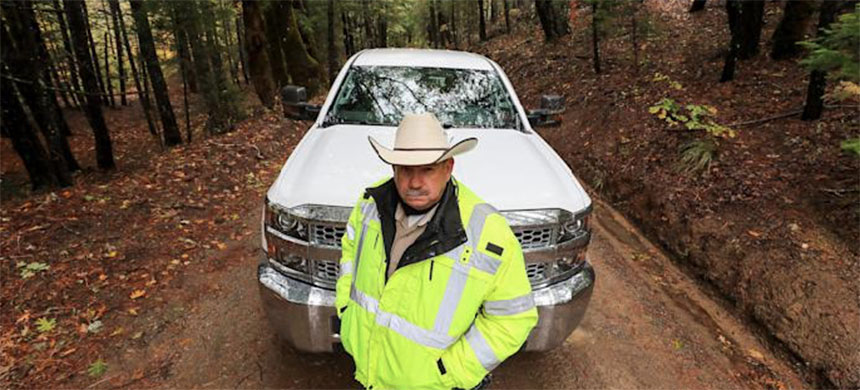 Mendocino County Sheriff Matt Kendall. His department patrols an area of California three times the size of Rhode Island with less than two dozen deputies. (photo: USA Today)
Mendocino County Sheriff Matt Kendall. His department patrols an area of California three times the size of Rhode Island with less than two dozen deputies. (photo: USA Today)
Marijuana Wars: Violent Mexican Drug Cartels Turn Northern California Into 'The Wild West'
Beth Warren, USA Today
Warren writes: "Mexican drug cartels are muscling in on America's burgeoning multi-billion-dollar marijuana industry, illegally growing large crops in the hills and valleys of Northern California."
READ MORE
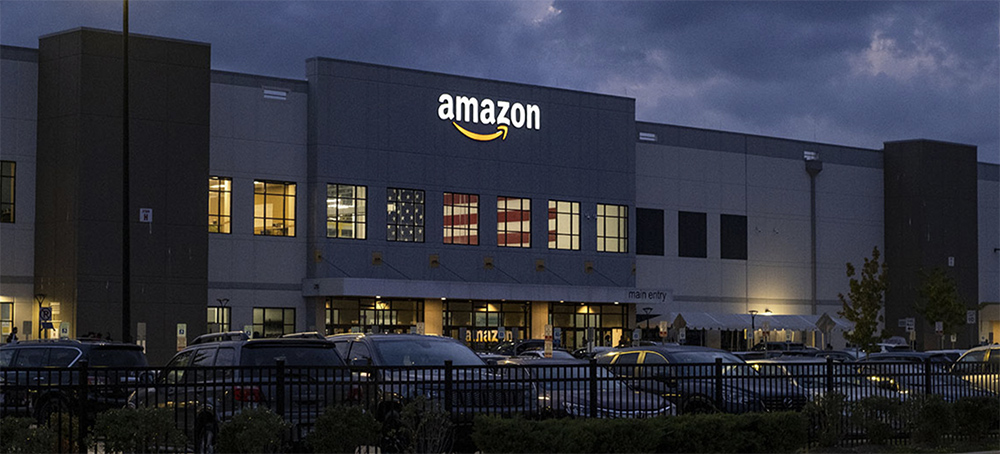 People arrive for work at the Amazon distribution center in the Staten Island borough of New York, Monday, Oct. 25, 2021. (photo: Craig Ruttle/AP)
People arrive for work at the Amazon distribution center in the Staten Island borough of New York, Monday, Oct. 25, 2021. (photo: Craig Ruttle/AP)
Amazon Unionization Efforts Get a Boost Under a Settlement With US Labor Board
Associated Press
Excerpt: "Under pressure to improve worker rights, Amazon has reached a settlement with the National Labor Relations Board to allow its employees to freely organize - and without retaliation."
Under pressure to improve worker rights, Amazon has reached a settlement with the National Labor Relations Board to allow its employees to freely organize — and without retaliation.
According to the settlement, the online behemoth Amazon said it would reach out to its warehouse workers — former and current — via email who were on the job anytime from March 22 to now to notify them of their organizing rights. The settlement outlines that Amazon workers, which number 750,000 in the U.S., have more room to organize within the buildings. For example, Amazon pledged it will not threaten workers with discipline or call the police when they are engaging in union activity in exterior non-work areas during non-work time.
According to the terms of the settlement, the labor board will be able to more easily sue Amazon— without going through a laborious process of administrative hearings — if it found that the online company reneged on its agreement.
"Whether a company has 10 employees or a million employees, it must abide by the National Labor Relations Act," said NLRB General Counsel Jennifer Abruzzo, in a statement. "This settlement agreement provides a crucial commitment from Amazon to millions of its workers across the United States that it will not interfere with their right to act collectively to improve their workplace by forming a union or taking other collective action."
She added that "working people should know that the National Labor Relations Board will vigorously seek to ensure Amazon's compliance with the settlement and continue to defend the labor rights of all workers."
Amazon.com Inc., based in Seattle, couldn't be reached immediately for comment.
A labor scholar says the settlement is a big step by Amazon
Kent Wong, the director of the UCLA Labor Center, called the settlement "unprecedented" and said it represents a sea change in attitude at Amazon, which is known to deploy fierce measures against union activity at its warehouses.
"Amazon has been very consistent in holding a strong anti-union position, " Wong said. "This opens up a new opportunities for unionization there as well as at other companies."
Wong noted that the settlement comes as Amazon, the nation's second-largest private employer after Walmart, is on a hiring binge while facing organizing efforts at warehouses in Alabama and New York.
In November, the labor board ordered a new union election for Amazon workers in Bessemer, Alabama, based on objections to the first vote that took place in April. The move was a blow to Amazon, which spent about a year aggressively campaigning for the Bessemer warehouse workers to reject the union, which they ultimately did by a wide margin. The board had not yet determined the date for the second election, and it hasn't determined whether it will be conducted in person or by mail.
The campaign is being spearheaded by the Retail, Wholesale and Department Store Union.
Meanwhile, on Wednesday, the Amazon Labor Union, an independent group representing workers in New York's Staten Island borough, refiled its petition for a union election. The group of workers withdrew its first petition in mid-November to hold a vote to unionize after falling behind the adequate number of workers pledging support. Former Amazon employee Christian Smalls is organizing the effort in Staten Island without the help of a national sponsor.
The organizing drive is also happening during a moment of reckoning across Corporate America as the pandemic and ensuing labor shortage has given employees more leverage to fight for better working conditions and pay. Workers have staged strikes at Kellogg's U.S. cereal plants as well as at Deere & Co., to name a few.
READ MORE
 President Joe Biden and first lady Jill Biden took calls to the NORAD Tracks Santa Operations Center on Christmas Eve. (photo: Carolyn Kaster/AP)
President Joe Biden and first lady Jill Biden took calls to the NORAD Tracks Santa Operations Center on Christmas Eve. (photo: Carolyn Kaster/AP)
The 'Let's Go Brandon' Oregonian, a New York Judge and the True Meaning of the First Amendment
Ruth Marcus, The Washington Post
Marcus writes: "This is the time of year for talk about the true meaning of Christmas. This year, it seems, we need to talk a bit about the true meaning of the First Amendment as well."
This is the time of year for talk about the true meaning of Christmas. This year, it seems, we need to talk a bit about the true meaning of the First Amendment as well.
Two otherwise unconnected Christmas week episodes bring freedom of speech to the forefront. First, an Oregon man, Jared Schmeck, who insulted President Biden on a Christmas call with the president and then complained that he was being attacked for exercising “my God-given right to express my frustrations in a joking manner.”
Next, a New York state judge, Charles D. Wood, who not only kept in place his blatantly unlawful prior restraint against the New York Times for publishing documents obtained from Project Veritas but also ordered the newspaper to turn over physical copies and destroy any electronic versions of the material.
Let me exercise my Constitution-given right to express my frustrations to suggest that neither individual understands the first thing about the First Amendment.
Schmeck had every legal right, as he says, to be rude to the president while he and the first lady were answering calls to NORAD’s Santa tracking center. Schmeck ended the call with “Merry Christmas and ‘Let’s Go Brandon’” — then insisted he meant “no disrespect” by the obviously disrespectful phrase, whose meaning no longer requires elucidation.
Here we get to the meaning of the First Amendment. It means that here, unlike in authoritarian countries, Schmeck not only has the right to say what he wants about the president, he also can say it directly to him, without fear of being jailed, being fined or being punished by the government in any way.
His freedom of speech is near absolute — just like that of the person who burns an American flag or wears a jacket emblazoned with “F--- the Draft” into a courthouse. No one can punish him — not in America. (At least not yet; see, for example, Donald Trump’s threat to “open up our libel laws.”)
But it is also fair game for others to criticize Schmeck for what he said. “I am being attacked for utilizing my freedom of speech,” Schmeck complained, utilizing his freedom of speech. Wrong. He is being attacked for being out of line, and while incivility is constitutionally protected, it is not immune from public criticism. “The remedy to be applied is more speech, not enforced silence,” Justice Louis Brandeis wrote in a famous dissent.
Enforced silence brings us to the even more dangerous — and even more ignorant — event of the past week: Wood’s order against the Times. The law here could not be clearer: Nothing is more repugnant to the First Amendment than telling a news organization what it can and can’t publish.
The Supreme Court underscored that principle in the 1971 Pentagon Papers case, New York Times Co. v. United States, in which the government sought to prevent the Times and The Post from printing classified documents. “These disclosures may have a serious impact,” Justice Hugo Black wrote in rejecting that effort. “But that is no basis for sanctioning a previous restraint on the press.”
Now comes Justice Wood, who, it is safe to say, is no Justice Black. His ruling came in a libel suit filed against the Times by Project Veritas, the conservative group that runs sting operations to expose alleged liberal bias in various institutions, including the mainstream news media.
The Justice Department is separately investigating the possible theft of a diary belonging to President Biden’s daughter, Ashley Biden; the diary ended up in the possession of Project Veritas, which didn’t publish the material and offered to return it. The Times, in the course of reporting on that probe, published quotes from memos prepared by a Project Veritas lawyer.
Although the memos were prepared years before the libel suit was filed and were not obtained in conjunction with the case, Wood last month ordered the Times not to publish any additional material from them. In the latest order, which the paper has said it will appeal, he reaffirmed that ruling and further instructed that the Times surrender the disputed material.
The opinion is jaw-dropping in its constitutional illiteracy. Project Veritas has aggressively inserted itself into the political debate; its operations are a legitimate topic for news coverage, yet Wood found that the Times’s reporting on the group’s legal strategy is not a matter of “public concern.” He also determined that Project Veritas had adequately shown that the memos were “obtained by irregular means” — what those of us in the news business generally call reporting.
“[S]ome things are not fodder for public consideration and consumption,” Wood wrote. “A client seeking advice from its counsel simply cannot be a subject of general interest and of value and concern to the public. It is not the public’s business to be privy to the legal advice that this plaintiff or any other client receives from its counsel.”
And: “As important as the First Amendment’s protection against prior restraint is, on the present facts, the erosion of the attorney-client privilege is a far more imminent concern.”
No, a thousand times no. The essence of the Supreme Court’s teachings on the dangers of prior restraint is that it is not up to judges to determine in advance what is newsworthy. If the Times obtained internal memos, it is as entitled to publish them as it was to publish the classified material in the Pentagon Papers.
Schmeck at least has the defense of not having attended law school. Let us hope that a higher court will soon educate Wood in the meaning of the document he is sworn to uphold.
READ MORE
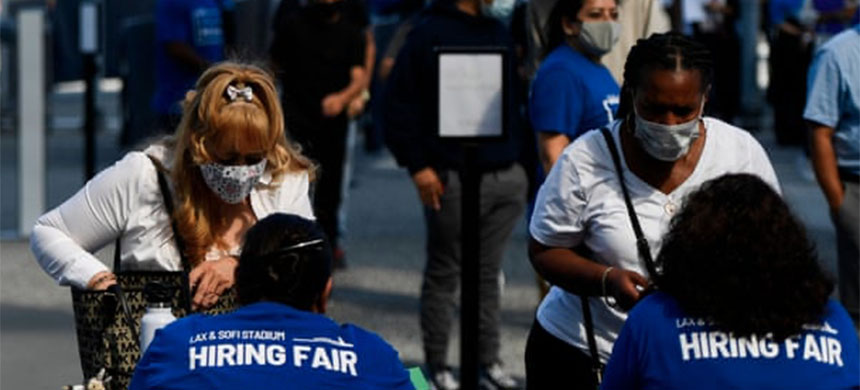 People receive information as they attend a job fair in Inglewood, California, in September. (photo: Patrick T Fallon/AFP/Getty Images)
People receive information as they attend a job fair in Inglewood, California, in September. (photo: Patrick T Fallon/AFP/Getty Images)
Black Americans Continue to See Higher Jobless Rate Despite Market Recovery
Lauren Aratani, Guardian UK
Aratani writes: "Even as economists celebrated a job market recovery seen from the beginning of the pandemic, when unemployment peaked at 14.8%, to November when unemployment was 4.2%, Black Americans have continued to see a much higher jobless rate."
Black Americans had 6.7% unemployment rate in November as economists unsurprised by disparity
Even as economists celebrated a job market recovery seen from the beginning of the pandemic, when unemployment peaked at 14.8%, to November when unemployment was 4.2%, Black Americans have continued to see a much higher jobless rate.In November, Black Americans had an unemployment rate of 6.7%, while the unemployment rate for white Americans was 3.5%. The gap is even more pronounced between men: Black men had an unemployment rate of 7.3% in November while white men saw an unemployment rate of 3.4%.
That this disparity has continued over the course of the pandemic is unsurprising to economists who have long paid attention to the racial gap in unemployment numbers.
Valerie Wilson, director of the Economic Policy Institute’s Program on Race, Ethnicity and the Economy, said that occupational segregation has meant that Black Americans were less likely to be able to work remotely amid lockdown orders. Many Black workers were given the choice of keeping jobs where they faced greater risks or deciding that the risk was not worth it.
“The two-to-one [disparity] has still been pretty consistent, and I think that says a lot to just how deeply entrenched those labor market inequalities are,” Willson said.
Black Americans have long faced discrimination in hiring processes. One study from 2017 showed that Black Americans who remove references to their race on their resumes are twice more likely to get interviews. The unemployment rate is even consistent across educational levels, with the unemployment rates of Black Americans who have a high school or bachelor’s degree being twice that of White Americans who hold the same degree.
Though many companies promised to reevaluate their hiring processes and focus on diverse recruitment following the massive protests after the murder of George Floyd in summer 2020, the racial gap in the unemployment rate still managed to stick. Other figures show that little progress has been made: There are just five Black CEOs leading Fortune 500 companies, and Black full-time workers are still making more than 20% less than white full-time workers.
Even the gains that Black Americans have seen in employment numbers come with caveats. In November, the unemployment rate for Black women jumped 2%, from 7% to 5% – the largest decrease for any group. While the number reflects Black women starting jobs, it also reflects tens of thousands of women who left the workforce last month, more than 90,000, according to government figures. Even while moms across the board have faced problems with childcare during the pandemic, research has shown that Black mothers in particular have faced the toughest childcare issues during the pandemic.
Wilson said there are multiple policies that need to be in place to address the unemployment rate gap but noted the complacency policymakers seem to have with the two-to-one disparity between the Black and White unemployment rates.
“Part of the challenge and difficulty in addressing it is that it sort of becomes normalized, like ‘Oh, OK – that’s just how it works’, without us actually sort of questioning and interrogating the way that we understand those disparities,” Wilson said.
READ MORE
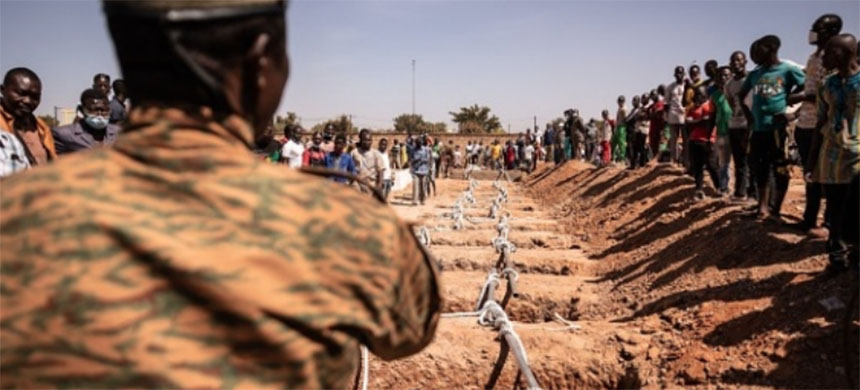 The government has enlisted the volunteer militiamen to help the army. (photo: Olympia De Maismont/AFP)
The government has enlisted the volunteer militiamen to help the army. (photo: Olympia De Maismont/AFP)
41 Killed in Attack by Armed Groups in Burkina Faso
Al Jazeera
Excerpt: "Dozens of people have been killed in an attack by armed groups in Burkina Faso's troubled north."
Government says the dead included members of a gov’t-backed civilian self-defence force set up to support the army.
Dozens of people have been killed in an attack by armed groups in Burkina Faso’s troubled north.
The government announced that 41 people had died in the attack that took place on Thursday.
In a statement released late on Saturday, the government said the dead included members of a government-backed civilian self-defence force known as the Volunteers for the Defence of the Motherland (VDP), set up to support the army.
According to local media, the ambush targeted a convoy of traders escorted by VDP near Ouahigouya, a town not far from the Mali border.
Among the victims was Ladji Yoro, considered a leader of the VDP in Burkina Faso, the government said, adding that the identification of the victims was still under way.
Armed groups have driven religious and ethnic tensions between farming and herding communities in Mali, Burkina Faso, and Niger to boost recruitment among marginalised communities.
Saturday’s attack was the deadliest since mid-November when 57 people, including 53 gendarmes, were killed in an attack on a gendarmerie post.
Burkina Faso’s ill-equipped army has struggled to contain the spread of violence.
Last year, the government enlisted the help of volunteer militiamen to help the army but they have incurred retaliation by the rebels who attack them and the communities they help.
At least 2,000 people have been killed in the fighting and 1.4 million displaced.
Burkina Faso is also facing a political vacuum in the face of the escalating security crisis.
Anger at the security situation has spilled over since the attack in November, leading to street protests. The public was also enraged by news that the troops had gone two weeks without food rations.
Last week, UN agencies said the worsening violence in the wider Sahel region has led to one of the world’s most acute humanitarian crises.
ADDITIONAL INFORMATION:
Burkina Faso
Burkina Faso & MAP
READ MORE
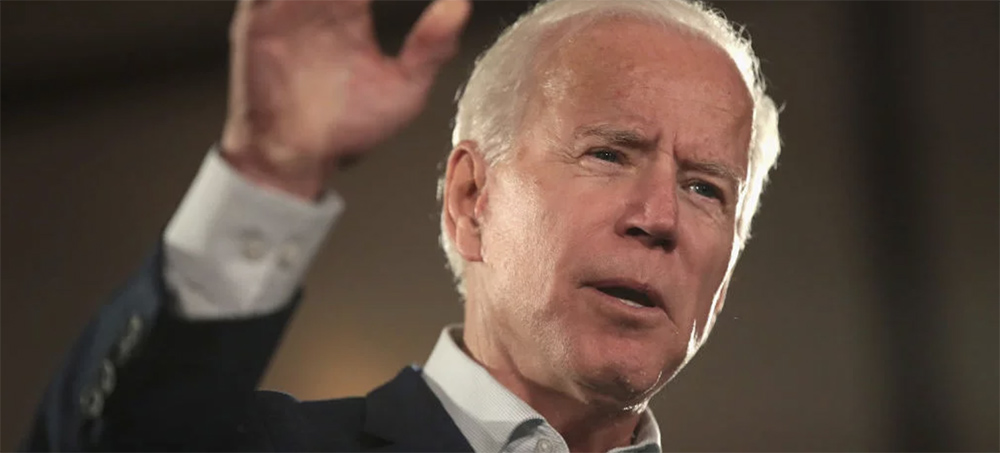 Joe Biden. (photo: Scott Olson/Getty Images)
Joe Biden. (photo: Scott Olson/Getty Images)
Joe Biden's 2021 Climate Report Card
Brian Kahn and Molly Taft, Gizmodo
Excerpt: "When elected, Joe Biden promised an 'all of government' approach to address the climate crisis. The grades are in for his first year."
When elected, Joe Biden promised an "all of government" approach to address the climate crisis. The grades are in for his first year.
We’re nearly a year into the Joe Biden presidency, a presidency the man himself declared would be devoted to combatting climate change. He arrived in office at the start of a critical decade, and the Biden years will play a major role in shaping it.
Biden started the Democratic primaries with one of the weakest climate plans before strengthening it after activists pushed him. Still, whether he, even with full control of Congress, could deliver meaningful climate policies was an open question. Nearly a year later, we have some answers.
The president alone doesn’t hold all the cards to address climate change in the U.S., let alone the world. The Republican party and fossil fuel industry have thrown their full weight behind ensuring Biden has as little help as possible. But the occupant of the White House and the federal agencies they oversee have an enormous amount of power to shape the response to the crisis we face. With that in mind, Earther has put together a report card to gauge if Biden has delivered on his “all of government” promise to fix the world’s most pressing problem. And we’re not grading on a curve because physics doesn’t believe in grade inflation.
READ MORE
Contribute to RSN
Follow us on facebook and twitter!
Update My Monthly Donation
PO Box 2043 / Citrus Heights, CA 95611

